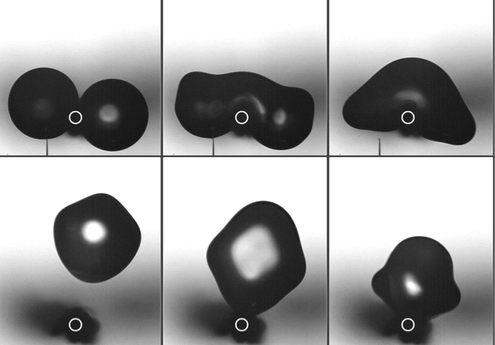A Duke University team has created fibers that cause liquid to jump off their surface as it accumulates, leading to new possibilities in water purification, atmospheric moisture harvesting, and various drop collecting industrial material applications.
“Self-removal is essentially inevitable as long as the surface is reasonably hydrophobic,” said Chuan-Hua Chen of Duke University in Durham, North Carolina, a lead researcher of the study. High degrees of hydrophobia are not necessary to create self-removing droplets. Self-removal is based largely on a small surface area for liquid to bead upon.
Liquids jump off the fibers as they accumulated due to the composition and width of the fibers. So long as merged droplets are above a certain size, when they coalesce into almost-spheres to reduce surface area, some of the energy released turns into mechanical energy sufficient to detach the bead and propel it away from the surface.
[youtube id=”pW4bfdOdstY” align=”center” mode=”normal” autoplay=”no” maxwidth=”500″]
The speed at which a droplet launches from a surface is based on the degree to which the ratio radius of the droplet trying to reduce contact with the surface exceeds the critical value of attachment to the surface.
It is the first time self-removing droplets have been demonstrated on curved surface such as fibers, and the team believes the technology should be applicable to emulsions so long as the emulsion is not too vicious.
The report, “Self-Propelled Droplet Removal from Hydrophobic Fiber-Based Coalescers,” was completed by Drs. Kungang Zhang, Fangjie Liu, Adam J. Williams, Xiaopeng Qu, James J. Feng, and Chuan-Hua Chen, and was published in the journal Physical Review Letters.
By Andy Stern
